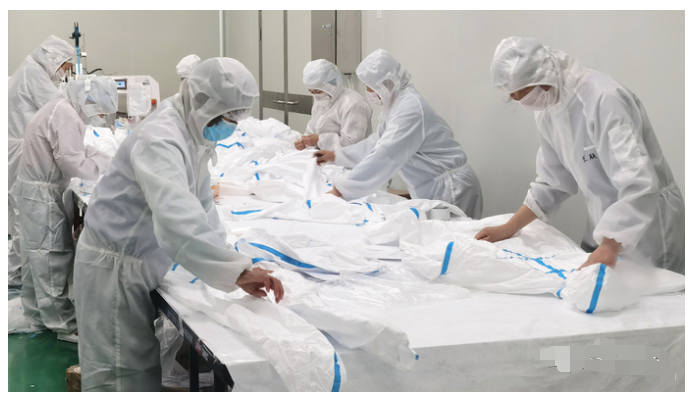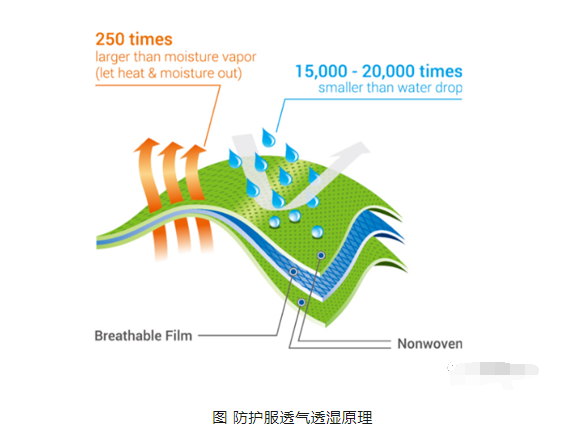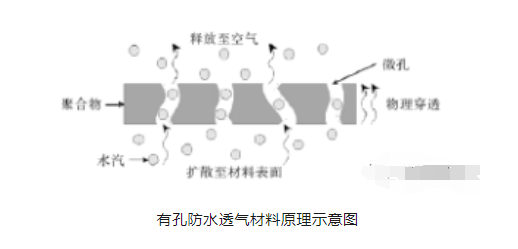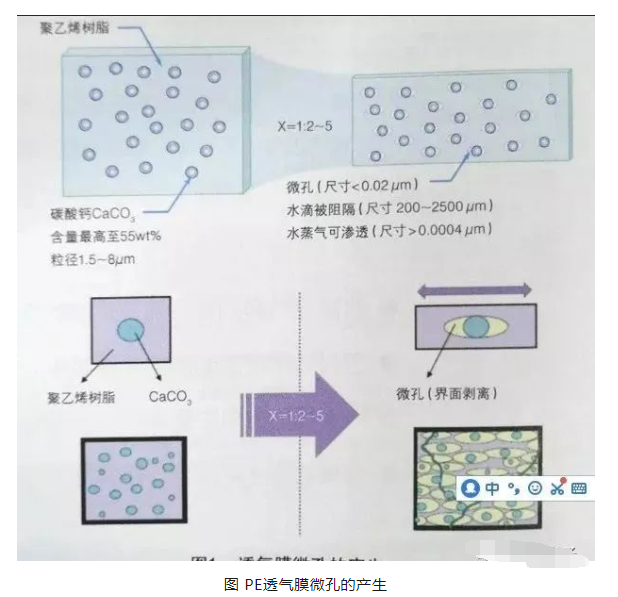Protective clothing—Moisture-permeable and breathable membrane materialsType introduction
During this global battle against the epidemic, anti-epidemic materials are still in short supply in the short term. In addition to masks, Ventilators and even protective clothing have recently been in short supply. According to Italy’s Corriere della Sera, an Armani factory has begun producing disposable medical protective clothing.

Protective clothing should not only ensure that medical staff can effectively isolate the virus, but also ensure that medical staff can effectively isolate the virus for a long time. It has a certain degree of comfort during wearing. The comfort of protective clothing must be considered from the fabric design of protective clothing. The current mainstream protective clothing fabric is composed of SFS (spunbond | microporous film | spunbond) three-layer breathable and waterproof fabric. Protective clothing with poor breathability (moisture) will make medical staff feel stuffy after wearing the protective clothing, and they will feel damp and hot after working for a long time. The main function of the spunbond non-woven fabric is to enhance the tensile force and hydrostatic pressure and protect the middle layer (breathable). membrane), the truly breathable structure lies in the polymer breathable membrane.

Classification of breathable membranes for protective clothing
It is understood that with the huge demand for protective clothing, the supply of breathable membrane raw materials for protective clothing is in short supply. Next, let’s take a look at the breathable membrane called the C-position material of protective clothing. According to the type of breathability, it can be divided into two categories: microporous hydrophobic and non-porous hydrophilic; depending on the raw materials, the breathable membrane can be divided into PE breathable film, TPU breathable film, PTFE breathable film, PTEE breathable film, etc.;
Breathable membrane

(1) Microporous breathable film
Microporous breathable film as The use of water-proof membranes mainly uses countless channels to design the size of the pores based on the difference in size of gas and liquid. Generally, the pore size is 0.01~10μm. This pore size cannot be penetrated by liquid and has a blocking effect on the liquid because there are many channels in the film. , the water barrier property of the film depends on the pore size and channel length of the breathable membrane. The main materials commonly used at present are polyethylene microporous membrane, PTFE, and PU microporous membrane (an earlier breathable microporous membrane). Among them, the cost of PE membrane is lower and the cost of PTFE is higher.

Principle diagram of porous waterproof and breathable materials
1. PE/PP breathable membrane
PE/PP polyolefin breathable film refers to adding about 50% special calcium carbonate to the resin carrier for blending, extruding it into a film, and stretching it under certain conditions. When stretching, interfacial peeling occurs between polyethylene and calcium carbonate particles, and interconnected pores or channels are formed around the calcium carbonate, making it have a certain breathability (moisture).
 The breathable film of PE carrier is relatively common in China and is mainly used for disposable medical protective clothing, such as Kingfa Technology, Changzhou Gaia, Guangzhou Hecheng, Haide Plastics, Xiamen Xinwancai, Fosu Technology, etc. are all manufacturers of PE breathable film particles that supply protective clothing; in addition, Henan Kegao recently used the research and development of battery separator technology to meet the functional requirements of medical disposable protective clothing. A new material of polypropylene nano-microporous composite membrane has been developed with an air permeability of 8,000 grams per square meter per day.
The breathable film of PE carrier is relatively common in China and is mainly used for disposable medical protective clothing, such as Kingfa Technology, Changzhou Gaia, Guangzhou Hecheng, Haide Plastics, Xiamen Xinwancai, Fosu Technology, etc. are all manufacturers of PE breathable film particles that supply protective clothing; in addition, Henan Kegao recently used the research and development of battery separator technology to meet the functional requirements of medical disposable protective clothing. A new material of polypropylene nano-microporous composite membrane has been developed with an air permeability of 8,000 grams per square meter per day.
2. PTFE breathable film
PTFE breathable film is a new type of waterproof and breathable material. The PTFE microporous film is made of high molecular weight PTFE dispersion resin mixed with lubricant and extruded The formed rods and strips are stretched and heat-set at temperatures below the melting point to form a flexible and smooth microporous film. During the extrusion process, due to the shear force, adjacent PTFE spherical particles are forced to extrude short fibers and cross-link to form a network structure, but the PTFE resin particles are not damaged. The pore size of the PTFE film can reach between 100 and 500 nanometers under the control of the stretching ratio, and the porosity reaches more than 85%.
The size of micropores is only one ten thousandth of the smallest water droplet, but they are about 700 times larger than the volume of a unit water molecule. Therefore, the PTFE microporous membrane can be waterproof while allowing sweat to be discharged directly to the outside through the micropores of the film; in addition to the waterproof and breathable function, the PTFE microporous membrane also has excellent temperature resistance, at 300℃—100℃ It can maintain stable physical properties; it can maintain extremely stable chemical properties when soaked for a long time in highly corrosive solutions such as strong acids and alkalis. In addition, polytetrafluoroethylene microporous membrane composite fabric can also replace melt-blown cloth to make masks, and the filtration efficiency reaches KN95 level or above.
(2) Non-porous breathable membrane
TPU and TPEE non-porous breathable (wet) films use the principle of hydrophilic moisture absorption of hydrophilic groups to remove water vapor from areas with high concentration and pressure. One side is conducted to the other side, evaporated and air-dried. ThisThe transport, conduction and volatilization of polymer carriers is roughly similar to the principle of water molecules entering cells, and its prerequisite is a concentration difference or pressure difference.
1. TPEE breathable film
TPEE thermoplastic polyester elastomer is an ester block polymer. After melting, it can be prepared by blow molding or casting. Perforated breathable membrane. TPEE is a linear molecular chain prepared by polycondensation technology using linear polyester materials and polyether materials. It is a crystalline network structure that can be restored to a linear molecular structure when melted. Because polyester and polyether materials have It has a certain degree of hydrophilicity and affinity for carbon dioxide, oxygen, etc., so TPEE has superior breathability and moisture permeability.
2. TPU breathable film
TPU is a linear block copolymer composed of oligomer polyol soft segment and diisocyanate-chain extender hard segment. Polyether TPU and SiO2 additives are melt-blended and plasticized, extruded from the machine head through a slit die, and after melting, a non-porous, uniform thickness is prepared through special processes such as calendering, retention, film blowing, and coating. Non-porous breathable TPU film. TPU film, among which the blown film method and the casting method are more common. In China, the casting method is mostly used, and the blow molding method is rarely used.
As can be seen from the table below, the TPU film can effectively block CH4 and N2 gases with a diameter of about 0.3nm. Therefore, the TPU film can effectively block bacteria (1~10μm) and viruses (20~200nm). ). In addition, CO2 can penetrate the TPU film very well, indicating the characteristics of the polar film.
In addition, TPU can also be used as sealing strips for protective clothing. TPU sealing strips are used when sewing protective clothing, and the strips are directly hot-pressed with the protective clothing fabric through a heat-pressing sealing machine. This kind of fit has high efficiency and high sealing and waterproof barrier level.
TPU and TPEE non-porous films use the soft segment hydrophilic groups of polymer materials to achieve breathability and have excellent moisture permeability and breathability. Protective clothing made of this breathable film is worn by medical staff. Steam can easily dissipate when on the body, and since there are no pores, the risk of virus penetration can also be greatly reduced.






